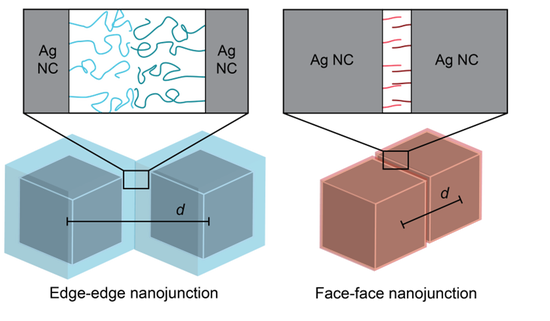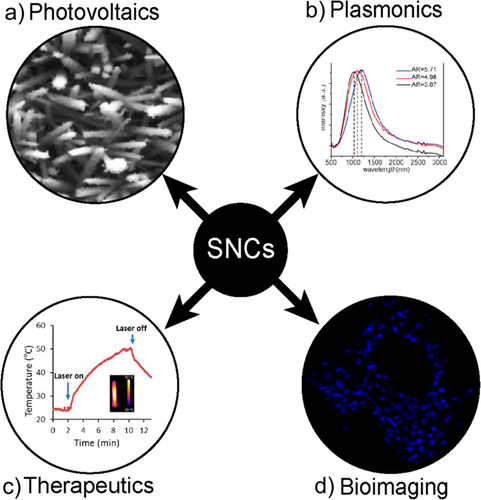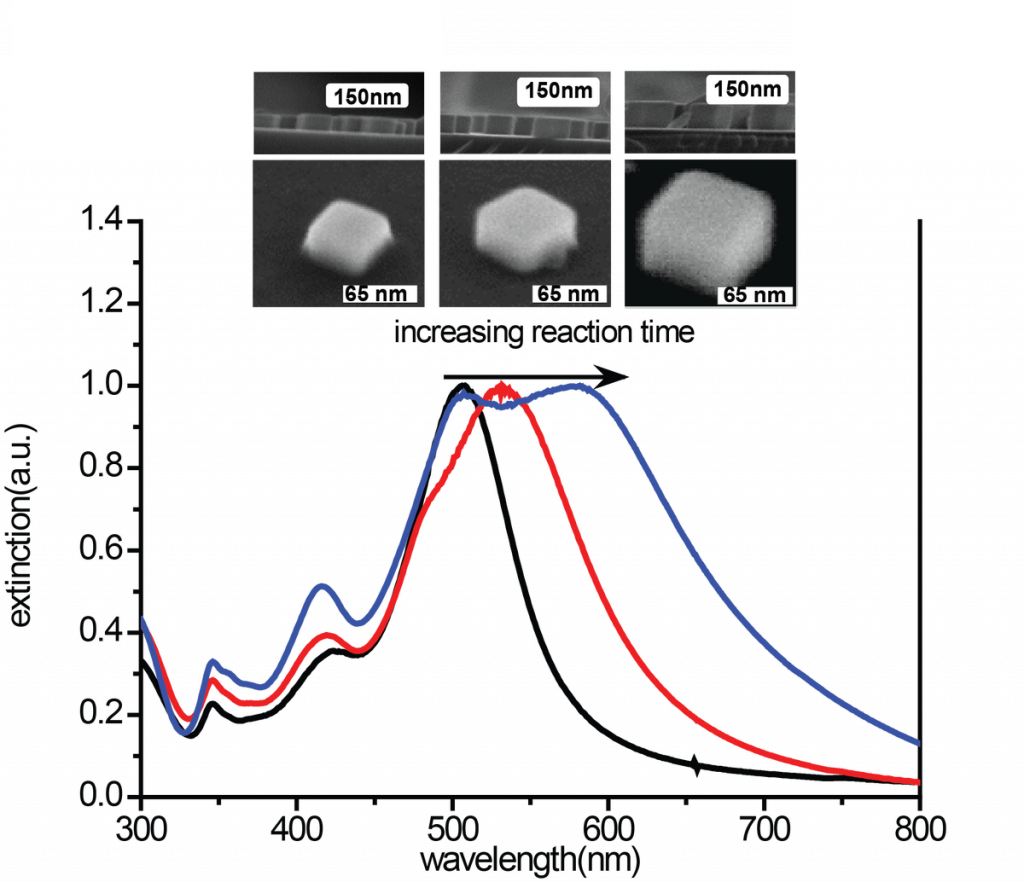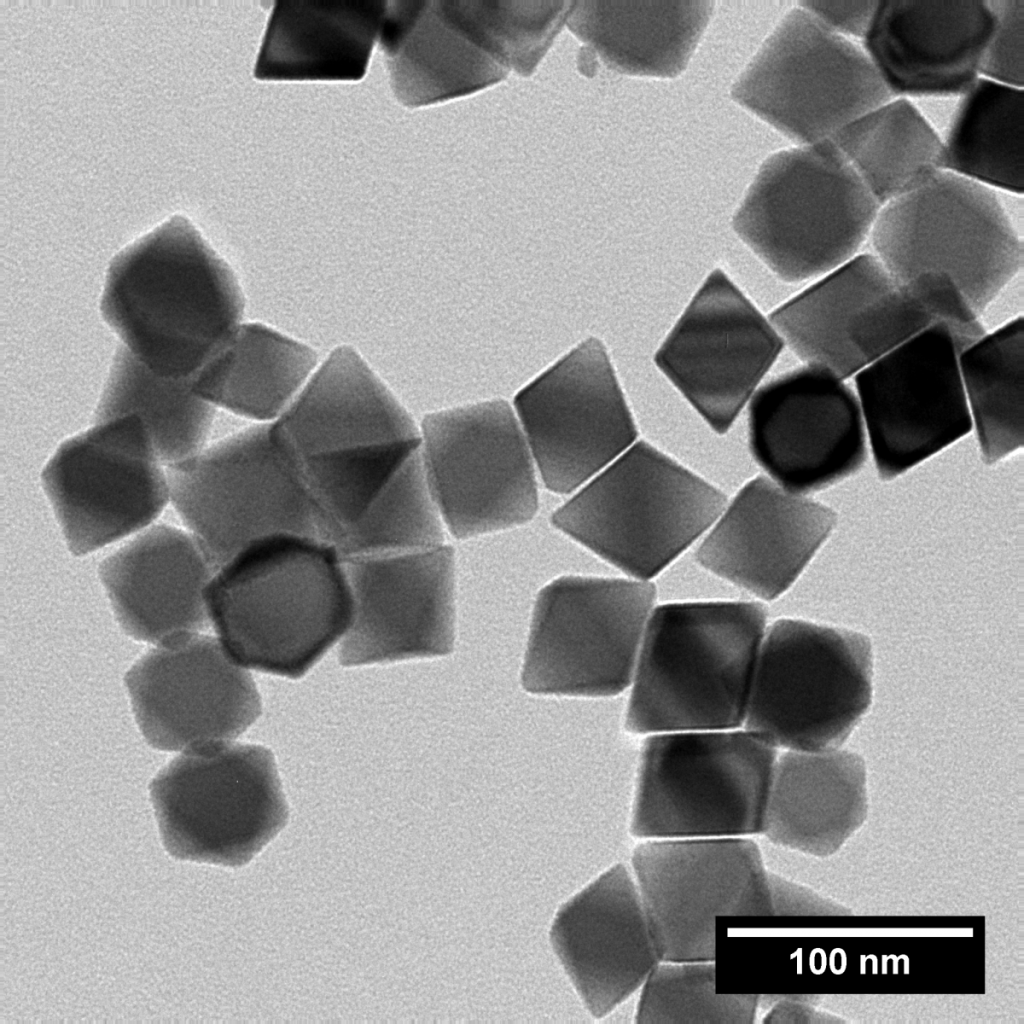We seek to change the way inorganic nanomaterials are designed for applications ranging from sensors to circuits.
Rational Synthesis of Shaped Nanocrystals
We seek to understand the chemical mechanism behind the nucleation and growth of inorganic nanocrystals, including metals, semicondcutors, and biominerals. This has included probing the role of halide anions and polymers in directing the selective growth of low-energy Ag facets. More recently, our lab discovered a new synthetic pathway for achieving low-dimensional semiconductor nanocrystals through the synthesis of single-source metal-organic liquid crystals (MOLCs).
Recent publications in this area:
- Chem of Mater., 27, 4957–4963 (2015)
- Chem. of Mater., 30, 14, 4617–4623 (2018)
- JACS, 136, 6175–6178 (2014)
- Langmuir ASAP (2018)
Self-Assembly of Inorganic Nanocrystals

We are interested in deciphering and exploiting the role of nanocrystal shape in regulating materials self-assembly, namely for the fabrication of metamaterials and plasmonics. Previously, we demonstrated that shaped inorganic nanocrystals orient into clusters and networks when surface-modified with polymer ligands. This concept of self-orientation has become a powerful design tool for building functional plasmonic nanocomposites and platforms for enhanced spectroscopies/chemical sensing.
Recent publications in this area:
- Nature Nanotechnology, 7, 433–437 (2012)
- Nature Communications, 6, 7325 (2015)
- Nature Photonics 12, 485-488 (2018)
- Chemical Reviews, 118, 3100-3120 (2018)
- ACS Nano, 10 (8), 7523–7531 (2016)
- Advanced Functional Materials, 1803019 (2018)
Metal Chalcogenide Nanocrystals for Plasmonics

We utilize chemical synthesis as a powerful fabrication “tool” for generating nanomaterials (namely metal chalcogenide nanoparticles) with optical resonances in the infrared range. Our work on copper sulfide nanodisks was the first in the field to explore the shape-dependent optical resonances for semiconductor nanocrystals. We demonstrated the synthesis of colloidal copper sulfide nanodisks with a wide range of carrier densities and provided the first demonstration of plasmonic coupling between semiconductor nanocrystals. Our lab is currently working toward understanding the phenomenon of plasmon-exciton coupling in these nanomaterials, and the effects of coupling on nonlinear optical properties.
Recent publications in this area:


